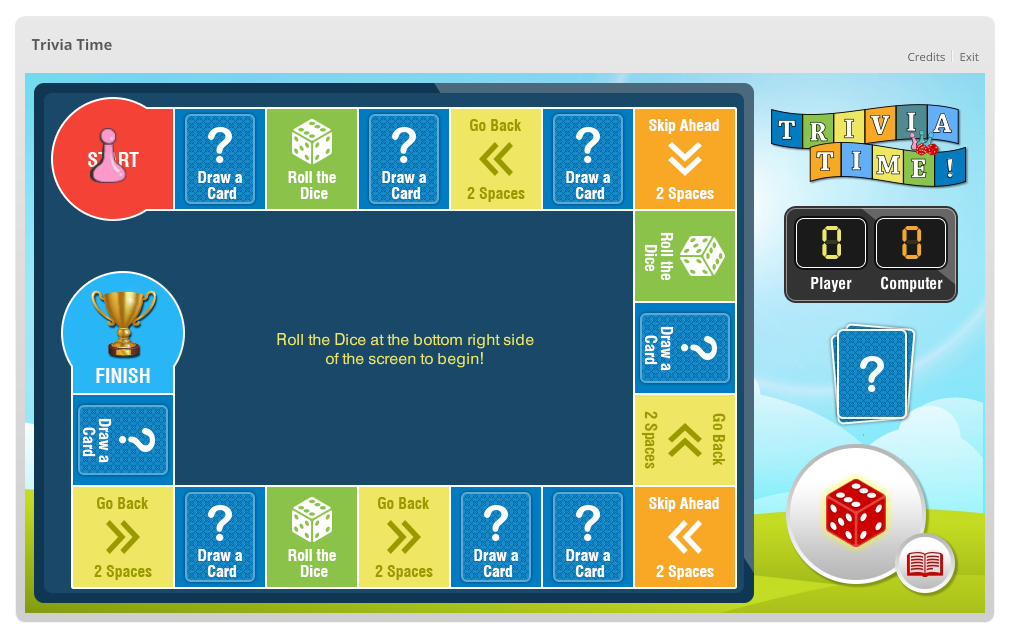A Fresh Look at E-learning Assessments: 4 Microlearning Formats
Microlearning assessments can help companies boost learners’ performance. Here are 4 interesting formats to deliver microlearning assessments.

To ensure learners are able to apply their learning at the workplace, the instruction must be directly linked with the learning objectives—objectives that are clear, measurable, and based on improving performance. To facilitate a proper performance-based learning experience, it’s equally important to have an assessment strategy that’s not solely focused on testing learners randomly but also on testing them to see if they have acquired the required skills from the training program. Microlearning assessments can improve workplace performance by challenging learners to use their critical thinking skills and execute performance-based tasks.
4 Types of Microlearning Assessments to Boost Workplace Performance
- Scenario-based assessments
- Simulation-based assessments
- Game-based assessments
- Combine traditional assessments with microlearning assets
PBAs(Performance-based Assessments) can be delivered in different formats but delivering them in the right format (which is, again, aligned with the objectives) is the key to fostering a performance-based learning experience among learners. In this blog, we are going to look at microlearning as an assessment strategy and the different ways it can help deliver PBAs. But first, let us understand why microlearning is a good means for carrying out assessments.
For learners who cannot dedicate time out of their busy work schedules for training—let alone assessments—micro assessments aim to bridge the gap by offering small, bite-sized assessments that can be taken anywhere-anytime on mobile devices. Think of all the sales reps who would rather prefer spending time in the field interacting with the customers and prospects than powering through a course/assessment in a classroom setting. For these learners, microlearning assessments are the best choice as they:
- Are short, brief which means less cognitive load
- Can be used to test the learners at regular intervals without interrupting their work
Now, let’s look at each of the microlearning assessment types in detail.
4 Types of Microlearning Assessments to Improve Workplace Performance
1. Scenario-based assessments
Traditional assessments such as ‘True/False’, ‘Fill in the Blank’ typically evaluate the basic understanding of a learner. However, these assessments lack context; contexts that are relatable and realistic for the learners to identify with. Scenario-based assessments in eLearning present learners with realistic situations in which to make decisions or apply new knowledge. Scenario-based assessments (SBAs) are beneficial because they force learners to apply their existing knowledge in situations similar to those they are bound to encounter at work.
Also, the essence of microlearning is learning in short bursts. In this regard, companies can use mini scenarios to make the assessments more relevant and valuable. One of the big advantages of using mini scenarios is that they’re fast and easy to build; which in turn means that they are easy to disseminate and at a faster pace, too.
| Example
Take sales training, for example — sales reps learn best when their training content is contextual, replete with real-world contexts and challenges. Based on this understanding, microlearning scenario-based assessments for sales training include short scenarios (disguised as assessments) based on the challenges faced by sales reps on a day-to-day basis including—but not limited to—’how to handle customer objections’, ‘how to close a sale’, ‘how to approach a customer’, and more. |
These challenges form the basis for the scenario-based questions and require the sales rep to exercise sound decision-making skills while responding. What makes SBAs tailor-made for sales training is that they can be delivered in spaced intervals over the Internet or hosted on an LMS; which means the sales rep does not have to worry about training taking up their time. They can afford to take the assessment whenever they find time and on any device they prefer.
2. Simulation-based assessments
Simulations in eLearning are not only known for imparting practical hands-on knowledge to learners, they are also great tools for performance-based microlearning assessments. Let’s understand this with the help of an example.
| Example
An organization has just introduced a new piece of software, and a software training program has been put in place to ensure that its users are equipped with the right skills when the software goes live. However, training alone will not suffice to ensure a proper transfer of knowledge. The most effective way to qualitatively evaluate the learners’ real-world preparedness and help them retain knowledge—without taking too much of their time—is by testing their knowledge repeatedly and reinforcing it in small amounts using simulation-based assessments. |
Offer short simulation-based assessments periodically in short bursts on the learner’s mobile devices—either using the LMS or over the Internet—as a means of testing as well as reinforcing the software training knowledge.
And instead of testing learners on the entirety of the tool, each microlearning assessment tests the learner on a specific feature of the tool by means of a virtual representation—for instance, one assessment can be on ‘how to open the application and login’, and another on ‘how to troubleshoot the software in case of a bug’, etc., (The learners can physically interact with the elements of this bite-sized simulation and gain meaningful feedback regardless of whether they choose the right or the wrong path.) This is one of the big advantages of using bite-sized simulation-based assessments—they do not make learners feel overwhelmed or overloaded by the information and can be accessed right on their hand-held devices.
3. Gamified assessments
After an instructor-led training session or an e-learning course, almost every learner becomes a victim of the forgetting curve. To help learners tackle the forgetting curve, test their application of knowledge at frequent intervals by using gamified microlearning assessments. In gamified assessments, game-based elements —such as badges, scoring systems, leaderboards—are used to give the assessment the look and feel of a game, clothing the assessment in a far more engaging and ‘playful’ context.
Why games in corporate training, you may ask? Firstly, using gamification for evaluation energizes learners by putting them in situations that mimic an environment of risk or challenge and rewarding them for success. Secondly, gamification breaks the ‘learner monotony’ by making the overall evaluation process fun, and helps them overcome the stress associated with assessments/tests. Sales training, new hire online training, compliance training, and information security are some of the examples where game-based microlearning assessments can make a huge impact.
Let’s consider the example of sales training:
| Example
In any organization, the sales team is always the most highly active and mobile people. With products launched at a rapid pace, it becomes important for companies to test the knowledge of their sales teams regularly as it is natural for them to forget information like product features, pricing, among others. But the sales teams are also the busiest of people, working amid tight schedules and are always away, busy emailing, giving sales presentations, meeting with the clients/prospects. Cramming in another training or assessment into their schedule is likely to make their lives even harder. |
With a challenge such as this, an evaluation strategy that involves traditional assessment types—such as multiple choice, fill in the blank, true/false—is not enough to engage them. Due to the passive and non-interactive nature of these assessment types, the sales reps are bound to get bored. With gamified microlearning assessments in place, however, the sales reps:
- Find it easy to engage with the assessment fully
- Are willing to solve small challenges and tasks related to their work as the challenges in the game boosts their engagement
- Can take the assessments during the commute/break or before they meet the prospect/customer
- Take the assessments right on their mobile devices (delivered via the LMS) without having to worry about spending an hour on a course or an assessment
Note that this change in their attitude toward taking assessments is a result of the incorporation of game-based elements that is the bedrock of gamification—which include rewards, badges, leaderboards, quests, etc. responsible for motivating them to complete the assessments without any hiccups.
Below is a sample gamified assessment strategy for sales training called ‘Trivia Time’. This assessment is mobile-friendly, short, and therefore best suited for the on-the-go sales reps to brush up and reinforce their sales skills.
The assessment entails the sales rep rolling a die and moving on a number board as per the number that shows up on the die. When the rep’s marker lands on a question slot, s/he draws a card which consists of a question related to customer objection handling. For every right answer, the sales rep earns points and gets an opportunity to roll the die and move forward; and for every wrong answer the virtual player (computer) earns a point.

Click to view the sample course Trivia Time.
4. Combine traditional assessments with microlearning assets
Despite the lack of interactivity in traditional assessments, there is still some advantage to using them in your evaluation strategy. One way of making the most of traditional assessments is to use them in combination with different microlearning formats such as videos, infographics, animations, PDFs.
Ask learners to:
- Review an infographic and answer some straightforward fill-in-the-blank questions
- Listen to an audio file/asset and answer short questions
- Answer an open-ended question
- Watch a video demonstrating how to put together a product. Then, ask them to critique the demonstration and identify the missteps if there are any
Host these micro assessments on the LMS for easier access—so that learners can access it whenever they wish to using their smartphones and tablets.
Concluding Remarks
In all of the examples above, notice that microlearning assessments act as reinforcement in some way. And that is exactly what assessments should be: allow learners to practice, self-evaluate, and be able to help them improve their performance by providing resourceful assets. Companies can truly sustain employee performance by investing in the right kind of evaluation strategy and aligning them with the performance-based learning objectives. Only then will companies be able to offer a training program that is complete—one that not only trains them and evaluates their knowledge of the training, but one that also focuses on transferring their learning to performance on the job.
Want to know more about microlearning and where else it can fit in your learning strategy? Here’s a comprehensive resource on how to get started with microlearning to achieve organizational goals.





